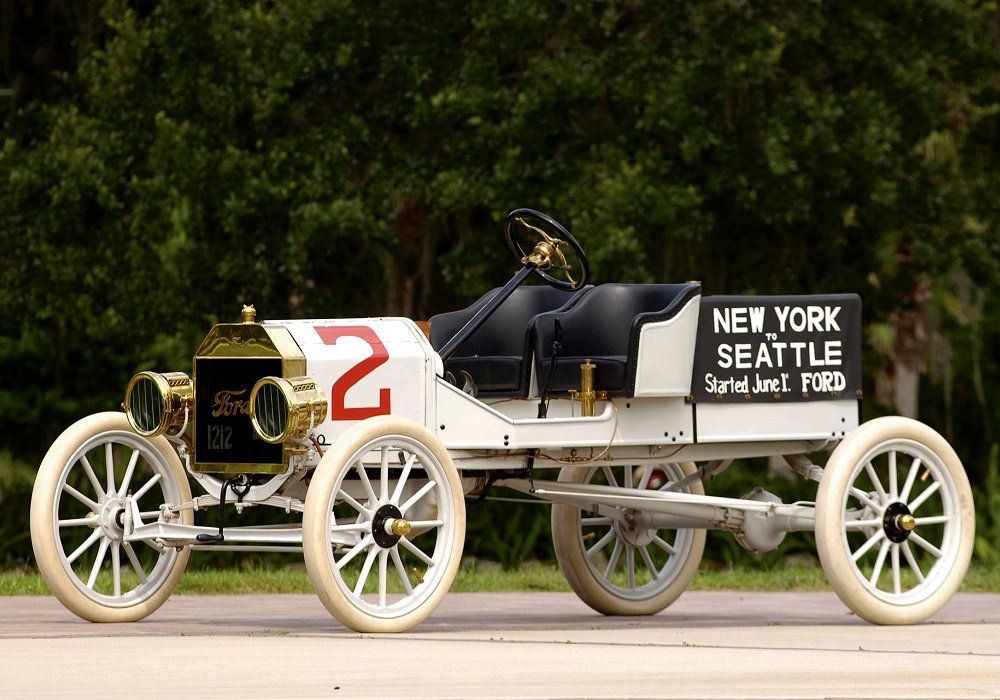Description
The Ford Model T Trans-Continental Race Car refers to the specially prepared Model Ts that were entered in grueling cross-country endurance runs and trans-continental races during the 1910s and 1920s, events that helped cement the reputation of the Model T as one of the toughest and most reliable cars ever built. While the Model T is most famous as the affordable “car for the people,” it also became a symbol of rugged durability in long-distance challenges, including highly publicized drives across the United States and even worldwide expeditions.
In these races and endurance events, the cars were usually stripped-down versions of the standard Model T, modified to reduce weight and improve reliability in harsh conditions. Non-essential bodywork was removed, leaving a Speedster-style open frame with bucket seats, a basic cowl, and little else. Large fuel tanks were often added for range, and suspension and wheels were reinforced to cope with rough, unpaved roads that made up most of the American landscape at the time. Engines were sometimes fitted with performance upgrades such as high-compression heads, special carburetors, or improved cooling systems, though the stock 2.9-liter four-cylinder’s simplicity was itself a major advantage.
One of the most famous endurance feats involving a Ford Model T was the 1919 transcontinental race from New York to Seattle, part of a larger U.S. Army expedition to test the feasibility of long-distance motor travel. Model Ts also featured prominently in numerous cross-country reliability trials of the era, often pitted against more expensive competitors from Packard, Cadillac, or Buick. In many cases, the humble Ford outlasted or even outpaced rivals, proving its reputation as a tough, go-anywhere machine.
The Model T’s role in transcontinental events was not limited to the United States. Fords were also entered in international long-distance competitions, such as drives across Asia, Australia, and Europe, further enhancing the car’s global reputation. These adventures often gained wide publicity, both as demonstrations of endurance and as marketing for the reliability of Ford products.
The significance of the Model T in these events was not just in outright speed—since many competitors were faster—but in its ability to survive extreme conditions. Poor roads, mud, steep grades, and mechanical strain destroyed many cars of the era, but the simple, easily repairable Ford often endured. This resilience made it a natural favorite for adventurers and racers alike.
Today, surviving examples of Model Ts that were used in transcontinental challenges are extremely rare, but the stories of these cars live on as part of the Model T legend. They remind us that the Ford wasn’t only the car that put the world on wheels—it was also the car that proved automobiles could conquer vast distances and harsh terrain, paving the way for modern long-distance travel and endurance racing.
